Lecture
Perspective (fr. Perspective from lat. Perspicere - look through ) - a technique of depicting spatial objects on a plane or some surface in accordance with the apparent reductions in their size, changes in the outlines of form and light and shadow relations that are observed in nature.
In other words, this is:
The perspective as a technique of the image appeared in the Renaissance, because at that time the realistic direction in the visual arts reached its peak. The created system of transmission of visual perception of spatial forms and the space itself on the plane allowed to solve the problem faced by architects and artists. Many of them used glass to determine the perspective, on which they were circling the correct perspective image of the required objects [1] .
Types of Perspective: Habitual to modern people a direct linear perspective is the fruit of a long-term development of the human mind. Some researchers note [2] that initially a person understands the reverse perspective (for example, children, or members of tribes divorced from modern civilization).
Depending on the purpose of the perspective image, the perspective includes the following types:
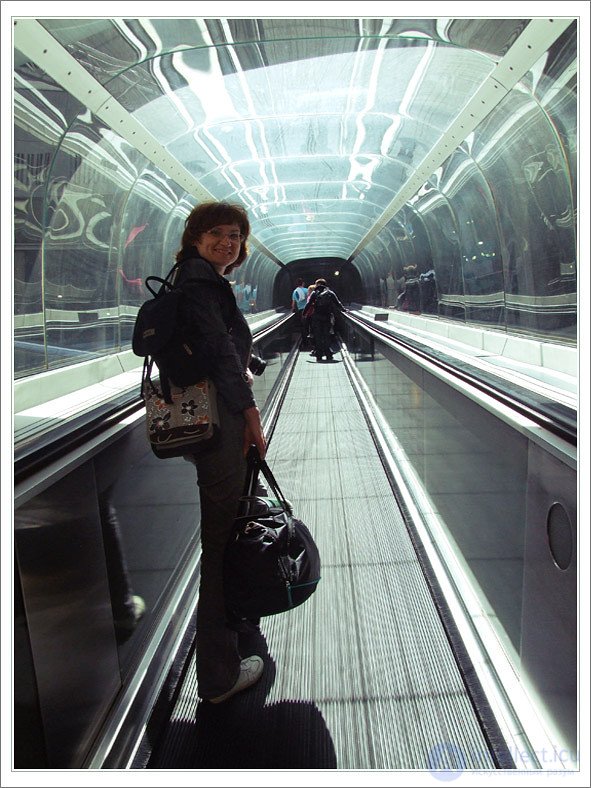


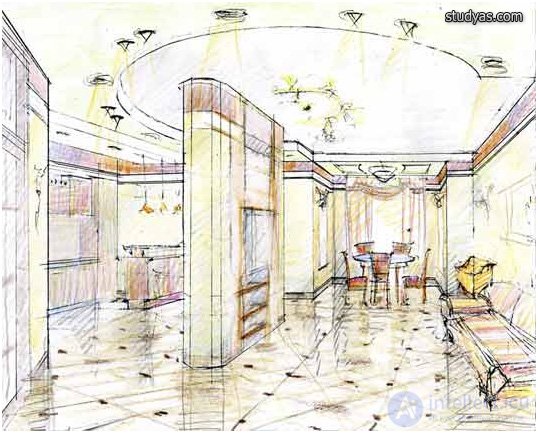
Leonardo da Vinci
defined “perspective”
as the science of “visual lines”
(linee visual!)
The desire to answer
to the question of how the visual perception of the subject is carried out, has led to ancient times
to the creation of the theory according to which vision is reduced to the sense of:
visual rays emanate from the eye, as if feeling the subject
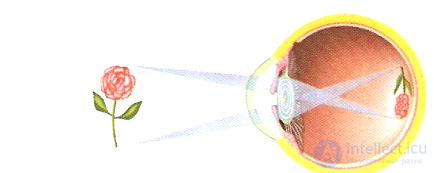
Perspective constructions are easily obtained.
as a result of dissection of the cone of the visual rays with a surface normal to the axis of vision. Some recent researchers believe that the ancient theorists and practitioners were part of a spherical surface that cuts the cone of visual rays.
For theorists of the Renaissance, this surface was the picture plane
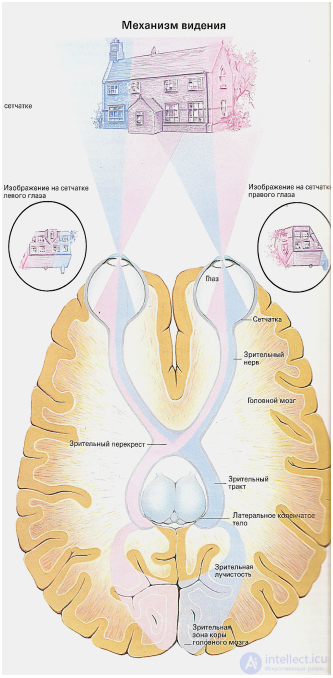
Perspective is the central projection of the object on one plane of projections, satisfying certain conditions, taking into account the peculiarities of visual perception.
Perspective advantages:
2) The projections are located on the same plane
Types of prospects:
Linear perspective (forward and reverse) - on the vertical plane
Panoramic perspective - on the inner surface of the cylinder with a large angle of view
Plafond perspective - on the horizontal plane (on the ceiling)
Dome perspective - on the inner surface of the dome (sphere, ellipsoid)
Theater perspective - on several planes
A perspective view designed for a fixed point of view and implying a single vanishing point on the horizon line (objects decrease proportionally as they move away from the foreground). The linear perspective theory first appeared in Ambrogio Lorenzetti in the XIV century, and again it was developed in the Renaissance (Brunelleschi, Alberti), was based on simple laws of optics and was excellently confirmed by practice. The mapping of space onto a plane is first a simple pinhole camera with a simple opening (wall), and then with a lens completely subordinated to the laws of linear perspective. Direct perspective has long been recognized as the only true reflection of the world in the picture plane. Given that the linear perspective is an image built on a plane, the plane can be positioned vertically, obliquely and horizontally depending on the purpose of the perspective images. The vertical plane on which images are built using a linear perspective is used to create the picture (easel painting) and wall panels (on the wall inside the room or outside the house, mainly at its ends). Construction of perspective images on inclined planes is used in monumental painting - painting on inclined friezes inside the premises of palace buildings and cathedrals. On an inclined picture in easel painting, perspective images of tall buildings are built from close range or architectural objects of the cityscape from a bird's eye view. The construction of perspective images on a horizontal plane is used when painting ceilings (ceiling). For example, mosaic images on oval plafonds of the Mayakovskaya metro station by artist A. A. Deineka are known. Images built in perspective on the horizontal plane of the ceiling are called the ceiling perspective.
The linear perspective on the horizontal and inclined planes has some peculiarities, unlike the images on the vertical picture.
In our time, the use of a straight linear perspective dominates, to a large extent because of the greater “realism” of such an image and, in particular, due to the use of this type of projection in 3D games.
In photography, lenses with a focal length approximately equal to the diagonal of the frame are used to obtain a linear perspective in the image close to real. To enhance the effect of a linear perspective, use wide-angle lenses, which make the foreground more convex, and for softening, long-focus lenses, which equalize the size difference between distant and close objects [3] .
The type of perspective used in Byzantine and Old Russian painting, in which the depicted objects appear to increase with distance from the viewer, the picture has several horizons and points of view, and other features. When depicted in the reverse perspective, objects expand as they are removed from the viewer, as if the center of the gathering lines is not on the horizon, but inside the viewer. The reverse perspective forms a holistic symbolic space, oriented towards the viewer and suggesting his spiritual connection with the world of symbolic images. Consequently, the inverse perspective corresponds to the task of embodying a supersensible sacral content in a visible, but devoid of material concreteness form. Since, under normal conditions, the human eye perceives an image in a direct, rather than in the reverse perspective, the phenomenon of a reverse perspective has been studied by many experts. For example, psychophysiologists with the help of a pseudoscope study the perception of the reverse perspective of a person in dynamic conditions. Psychologists investigate the mechanism of generation of the visual image as a whole, an important element of which is the personal meaning.
Among the reasons for the appearance of the reverse perspective phenomenon, the simplest and most obvious to critics was the inability of artists to depict the world as the observer sees it. Therefore, such a system of prospects was considered an erroneous method, and the prospect itself was considered false. However, this statement does not stand up to criticism, the reverse perspective has a rigorous mathematical description, mathematically it is equivalent to a forward perspective. The reverse perspective arose in late antique and medieval art (miniature, icon, fresco, mosaic) in both Western European and Byzantine countries. Interest in reverse perspective in theory (P. A. Florensky [2] , B. V. Rauschenbach [4] ) and artistic practice increased in the 20th century due to the revival of interest in symbolism and medieval artistic heritage. The reverse perspective is summarized in the problems of perception beyond the framework of the visual arts (see Hagiography).
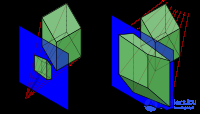
Perspectives, straight (left) and reverse (right).
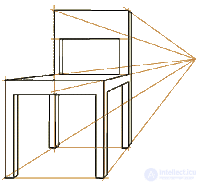
Linear perspective construction scheme.
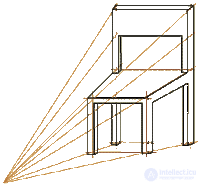
Scheme of building reverse perspective .

Image under construction on the inner cylindrical (sometimes ball) surface. The word “panorama” means “I see everything”; literally, it is a perspective image in a picture of everything that the viewer sees around him. When drawing, the point of view is placed on the axis of the cylinder (or in the center of the ball), and the horizon line is placed on a circle located at the height of the viewer's eye. Therefore, when viewing panoramas, the viewer should be in the center of a circular room, where, as a rule, there is a viewing platform. Perspective images on a panorama are combined with the foreground subject plan, that is, with real objects in front of it. The “Defense of Sevastopol” (1902-1904) and “Battle of Borodino” (1911) panoramas in Moscow (by F. A. Rubo) and “The Battle of Stalingrad” (1983) in g. Volgograd. The part of the panorama with real objects lying between the cylindrical surface and the viewer is called a diorama . As a rule, the diorama occupies a separate room in which the front wall is replaced with a cylindrical surface, and it depicts a landscape or a panorama of the city. In dioramas, lighting is often used to create a lighting effect.

The rules of panoramic perspective are used when drawing paintings and frescoes on cylindrical arches and ceilings, in niches, as well as on the outer surface of cylindrical vases and vessels; when creating cylindrical and spherical photopans.
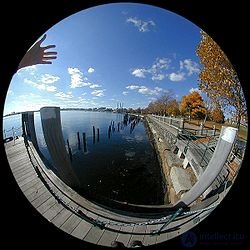
Spherical distortion can be observed on spherical mirror surfaces. At the same time, the viewer's eyes are always in the center of the reflection on the ball. This is the position of the main point, which is really not tied either to the level of the horizon or to the main vertical. When depicting objects in a spherical perspective, all depth lines will have a vanishing point at the main point and will remain strictly straight. Also the main vertical and the horizon line will be strictly straight. All other lines will be more and more bent as they move away from the main point, transforming into a circle. Each line that does not pass through the center, when extended, is a half-ellipse.
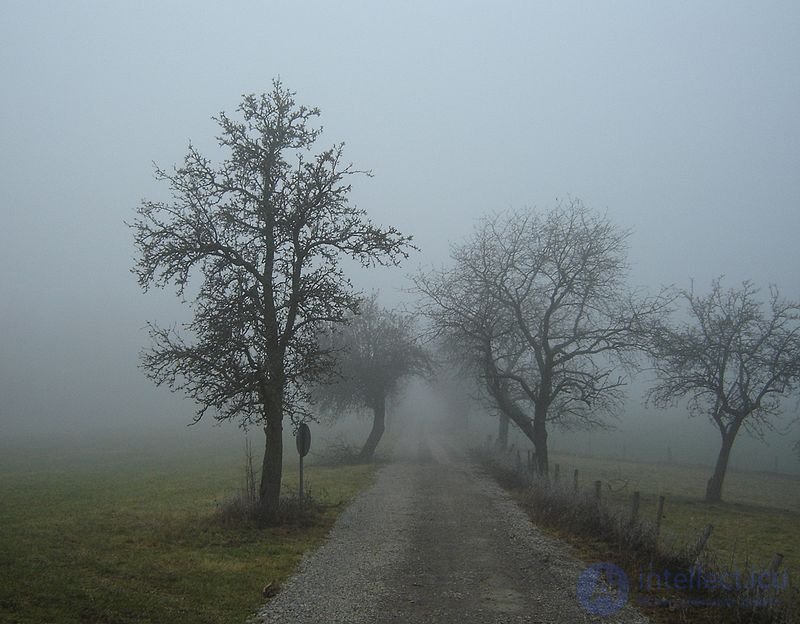
Tonal perspective - the concept of painting technique. A tonal perspective is a change in the color and tone of an object, a change in its contrasting characteristics in the direction of diminishing, dimming as one moves deeper into space. The principles of tonal perspective, first substantiated by Leonardo da Vinci.

Aerial perspective is characterized by the disappearance of clarity and clarity of the outlines of objects as they are removed from the eyes of the observer. At the same time, the background is characterized by a decrease in color saturation (the color loses its brightness, the light and shade contrasts soften), thus - the depth appears darker than the foreground. Aerial perspective is associated with a change in tones, so it can also be called a tonal perspective. [5] The first studies of the laws of aerial perspective are found in Leonardo da Vinci. “Things at a distance,” he wrote, “seem ambiguous and dubious to you; do them with the same vagueness, otherwise they will appear at the same distance in your picture ... do not limit things distant from the eye, because at a distance not only these boundaries, but also parts of the bodies are imperceptible. ” The great artist noted that the distance of the object from the eye of the observer is associated with a change in the color of the object. Therefore, to transfer the depth of space in the picture, the nearest objects should be depicted by the artist in their own colors, the distant ones acquire a bluish tint, “... and the most recent objects visible in it, such as mountains due to the large amount of air between your eye and the mountain seem to be blue, almost the color of air ... ".
The aerial perspective depends on the humidity and dustiness of the air and is pronounced during fog, at dawn above water, in the desert or steppe during windy weather when dust rises [6] .
Academician B.V. Rauschenbakh studied how a person perceives depth in connection with the binocularity of vision, the mobility of a point of view and the constancy of the shape of an object in the subconscious [4] and came to the conclusion that the near plan is perceived in the reverse perspective; far plan - in straight linear perspective. This common perspective, which connects the inverse, axonometric, and direct linear perspectives, is called perceptual [3] .
Comments
To leave a comment
Descriptive Geometry and Engineering Graphics
Terms: Descriptive Geometry and Engineering Graphics